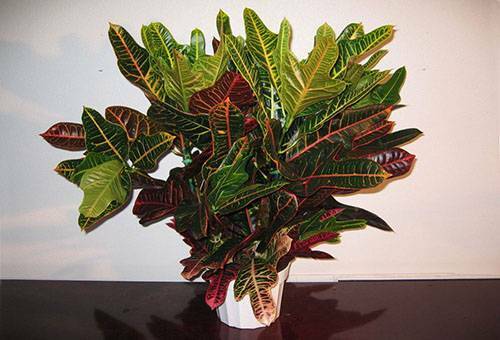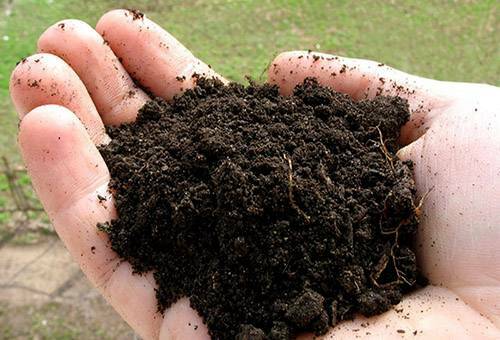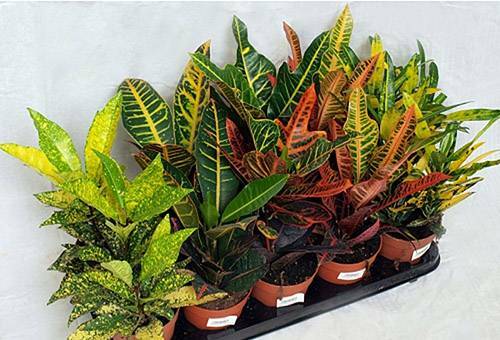Contents:
- What conditions does Croton like?
- Lighting and temperature regime
- Soil moisture
- Transplant process
- Breeding process
Croton is the most beautiful plant of the family of euphorbia. Its other name is the codaium. Thanks to the bright colors and unusual shape, this flower has become one of the favorites of gardeners. Unfortunately, keeping his home is not so easy. Therefore, before you buy this expensive house plant, you need to know everything about caring for croton at home. Only after understanding all the requirements for its cultivation, you can understand whether you need such a fastidious flower.

What conditions does Croton like?
The homeland of the croton is the humid tropics. In order for it to take root in your home, it is necessary to create conditions similar to those for it. This is the most difficult, because the care of the plant itself is simple enough.
Lighting and temperature mode
It is best to plant a cuneum from the east or west side. Only so he will have enough light. It is important that even though the flower loves sunlight, it is not desirable to get direct sunlight on it, it can cause the leaves to dry. Plants that are very young, should be carefully and carefully accustomed to light. In the case of insufficient lighting, the leaves of the croton will lose their mottled color and become ordinary green.
The temperature regime also plays an important role in the care of the cognome. In winter, the temperature in the room should not be below 15 degrees Celsius, in the summer it should not exceed 25 degrees. That is why it is not worthwhile to plant a plant in winter on window sills. It does not like drafts, so it can not be taken out of the room even in the summer.

Soil Moisture
If you want to know how to care for croton, you should remember the moisture that he loves very much. If he does not have enough, then the leaves first dry, and then fall off. It is important that in place of fallen leaves no longer grow new. The issue of humidity is particularly acute in the summer. The main thing is do not overdo it with watering and do not fill the plant. The water in the pot or pan must never be stagnant.
Gardeners are advised to do this: take the pallet deeper, fill it with pebbles, and put a pot of plant on top. It must be ensured that the stones are always wet.
Summer time requires that the cuneum is watered daily. You can water one day, and the second - to spray.
The spraying process also has its own characteristics:
- can not be applied to direct sunlight;
- should not allow water to flow down the leaves.
In winter, the croton can be watered once in three days.
Do not forget about the humidity of the air near the flower. It is strictly forbidden to leave it next to batteries, heaters. Next to the pot should be a container of water, so that the air is not dry. Otherwise, the leaves simply fall off or, even worse, the flowers are attacked by weevils and spider mites.

Transplant process
Croton is transplanted in the spring. The volume of the pot should be gradually increased by a couple of centimeters. There are no features of this process, everything happens in the same way as with other indoor plants.
There are some basic recommendations.
- Transplant should be carried out in plastic pots. In clay very soon the soil dries up.
- Do not clean the ground completely from the root.
- Be sure to take care of drainage.
Recipe for the mixture for geradal transplantation: it is necessary to take the same amount of deciduous, humus earth, peat, sand. Mix and add a small amount of charcoal.
Purchased land in which the transplant is performed, usually does not retain moisture because of its lightness, so it is desirable to add deciduous soil.

Breeding process
Simplest coding is propagated by cuttings. But this does not mean that the process itself is very easy. In fact, cuttings reluctantly take root, it takes a very long time.
Reproduction of the flower should occur when the ground is always kept at a temperature of at least 25 degrees and not more than 30. Therefore, it is necessary to take care of the lower heating. It will be easier to root the stalk in the water, but this is a longer process. In order to reproduce the cynomium, it is necessary to buy stimulants for the rooting of cuttings, for example, "Heteroauxin" or "Kornevin".
Here are some simple rules on how to multiply such a finicky and unusual plant.
If all conditions are created correctly, the croton will grow actively, the eye will be pleased with its flowers, the leaves will not dry, it will not be disturbed by illnesses. The slightest error, for example, regarding humidity or temperature, leads to the appearance of spots and pests that destroy the leaves.
In fact, the colorful color does not allow to detect the disease of the flower in time. Therefore, regular inspections of the plant for the presence of scab( brown spots), spider mites, mealy worms( white coating on the back of the leaves) should be carried out.
It is important, when finding the slightest suspicion of a disease, to take the necessary control measures:
- to increase the humidity in the room;
- to wipe the leaves with water with an admixture of soap;
- spray the flower with "Akarin" or "Actellikom".
If this is not done, the flower will die. This is manifested as follows: the leaves dry, wither and eventually fall off.
Gardeners give good advice to those people who do not plan to reproduce the seed cayeum seed. They say that you should not allow the flowering of the plant, so as not to weaken it, do not increase the risk of the disease. It is necessary to trim the peduncles before the appearance of flowers.
These are all the necessary tips and important points to consider for those who want to know how to care for croton.
It should be remembered that the croton is a representative of the malignant. Therefore, its juice is poisonous. It must be ensured that neither pets nor children can reach the plant.
Read the article: care for afelandra



